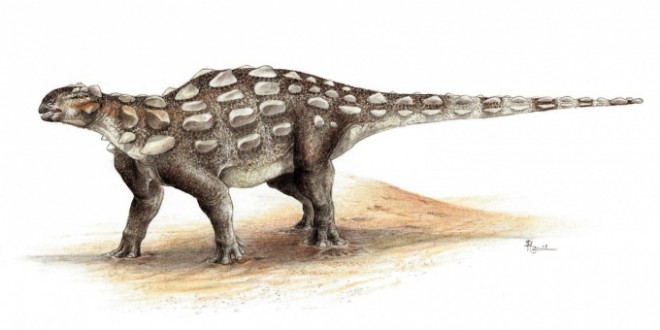Scientists have revealed the tale of the ankylosaur’s clubbed tail.
Building on research she started at the University of Alberta, Victoria Arbour, now a post-doctoral scholar in North Carolina, compared ankylosaur specimens from the Jurassic and Cretaceous periods to determine how the tail evolved.
Her findings, published Monday in the Journal of Anatomy, indicate the club portion — called a knob — appeared late in the Cretaceous period, about 66 million years ago.
The findings confirm what Arbour had suspected — that the weaponized tail likely evolved in phases, over millions of years.
To support the weight of a club, the tail had to first develop a stiffer “handle” with fused vertebrae — much like the handle of an axe.
Arbour’s interest in dinosaur tails began at the U of A, where she earned a master’s degree and PhD.
She studied the tails’ power and function, discovering they could swing approximately 100 degrees. Some clubs would have been powerful enough to break predators’ bones.
Now, Arbour wants to know why some ankylosaurs developed clubbed tails in the first place. She’s also interested in why other animals haven’t done the same.
“Giraffes actually whack their heads into each other,” she said, “and lots of animals have horns and antlers.
“Why don’t we see more animals with tail weapons? It makes more sense than having weapons on your head.”
Philip Currie, professor and research chair in dinosaur paleobiology at the University of Alberta, contributed to the work.
The research was funded by the National Sciences and Engineering Research Council, the Killam Trusts, and the Dinosaur Research Institute.
Agencies/Canadajournal
 Canada Journal – News of the World Articles and videos to bring you the biggest Canadian news stories from across the country every day
Canada Journal – News of the World Articles and videos to bring you the biggest Canadian news stories from across the country every day



